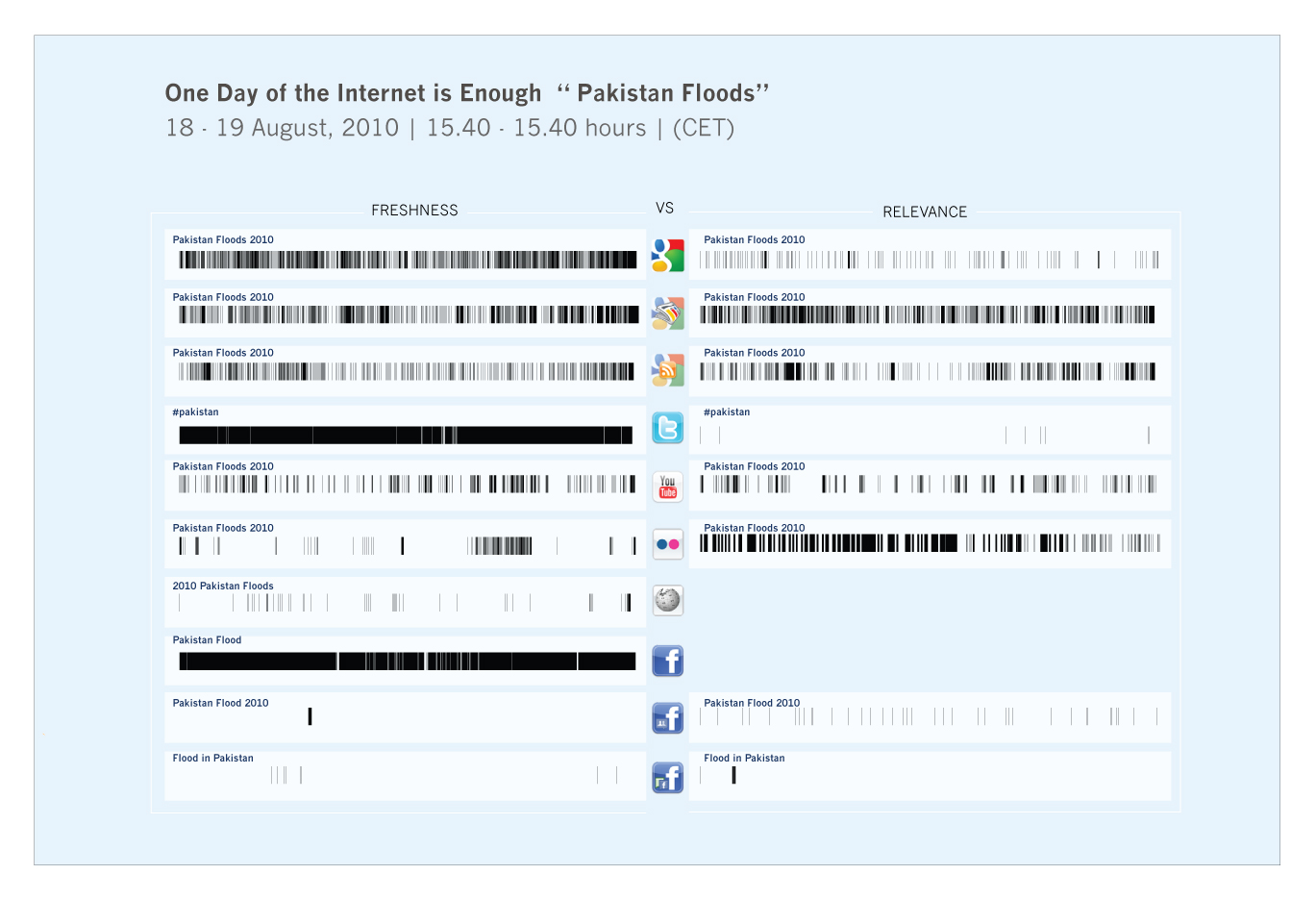Last year Erik Borra, Taina Bucher, Carolin Gerlitz, Esther Weltevrede and I worked on a project “One day on the internet is enough” which we have since referred to as “Pace Online.”

The project aims to contribute to thinking about temporality or pace online by focusing on the notion of spheres and distinct media spaces. Pace isn’t the most important question, respect for the objects and the relation between objects and pace per sphere are also of interest in this study. Both in terms of how the engines and platforms handle freshness, as well as currency objects that are used by the engines and platforms to organize content. Moving beyond a more general conclusion that there are multiple presents or a multiplicity of time on the internet, we can try to start specifying how paces are different, and overlap, empirically. The aim is to specify paces and to investigate the relation between freshness and relevance per media space. The assumption is that freshness and relevance create different paces and that the pace within each sphere and plattform is internally different and multiple in itself. (continue reading on the project wiki page)
I was reminded of the project when I read Rethinking the Digital Future, a piece by in the Wall Street Journal on David Gelernter and the lifestream. Gelernter describes a particular relationship between streams and pace when talking about the worldstream and an individual stream. In this subset of the worldstream things move at a slower pace because individual objects are added less frequently than when looking at the aggregate, the worldstream. We argue something similar in Pace Online, where – translated into Gelernter vocabulary - this worldstream consists of different spaces with different paces. Zooming into a space, such as Twitter or Facebook or Flickr, creates a subset within the worldstream. There are numerous subsets of subsets that may be created as one can zoom into the stream of Twitter and then further zoom into this stream based on a hashtag or an individual user profile where each of these subsets of streams have different paces.
In “Time to start taking the internet seriously” (2010) David Gelernter describes a shift from space to time and with it the lifestream as the organizing principle of the web: “The Internet’s future is not Web 2.0 or 200.0 but the post-Web, where time instead of space is the organizing principle.” Interestingly enough he does see a history in the fleeting stream: “Every month, more and more information surges through the Cybersphere in lifestreams — some called blogs, “feeds,” “activity streams,” “event streams,” Twitter streams. All these streams are specialized examples of the cyberstructure we called a lifestream in the mid-1990s: a stream made of all sorts of digital documents, arranged by time of creation or arrival, changing in realtime; a stream you can focus and thus turn into a different stream; a stream with a past, present and future. The future flows through the present into the past at the speed of time.” A stream with a past is something rare, for example you cannot go back to your first tweet if you have published over 3200 tweets on Twitter and you cannot search for tweets over 14 days old. While Twitter partner Gnip announced “Historical Twitter Data” yesterday, this history of tweets is only 30 days old. It also points to an interesting relation between the past, present and future of a stream as it offers the past because we cannot anticipate the future:
We have solved a fundamental challenge our customers face when working with realtime social data streams,” said Jud Valeski, Co-Founder and CEO of Gnip. “Since you can’t predict the future, it’s impossible to filter the realtime stream to capture every Tweet you need. Hindsight, however, is 20/20. With 30-Day Replay for Twitter, our customers can now replay history to get the data they want. (Gnip Blog)
One thought on “David Gelernter on the lifestream, time, pace and space.”